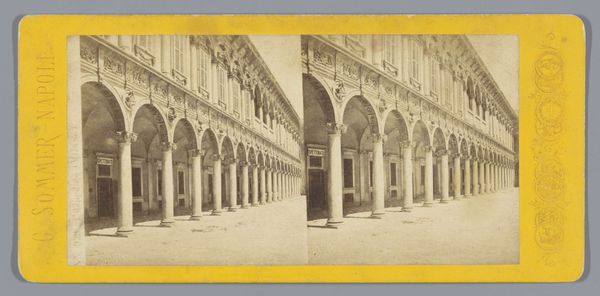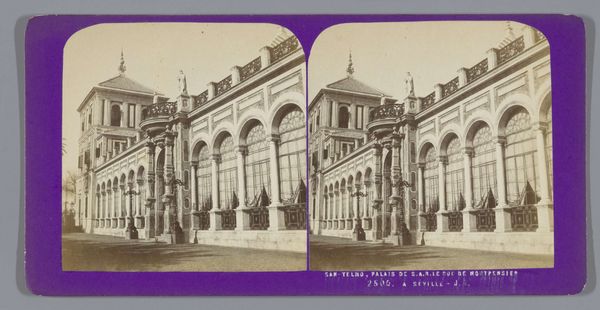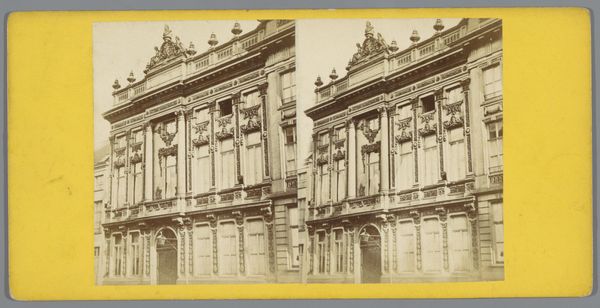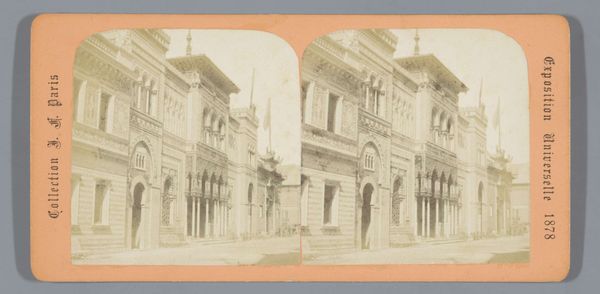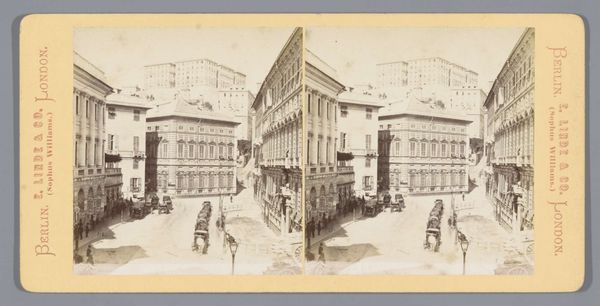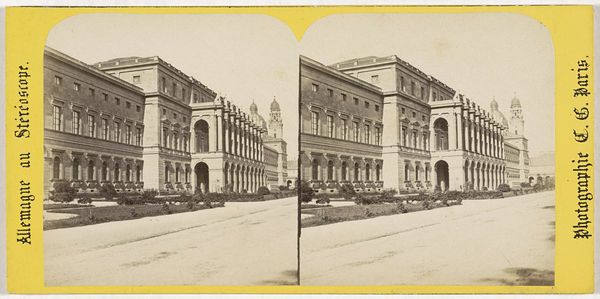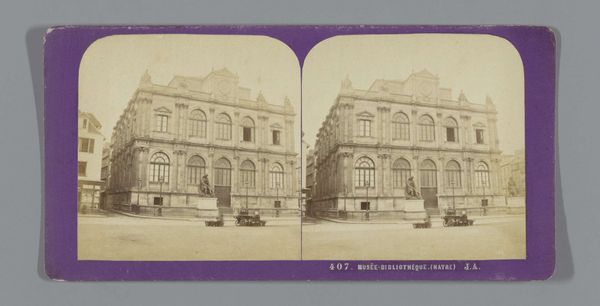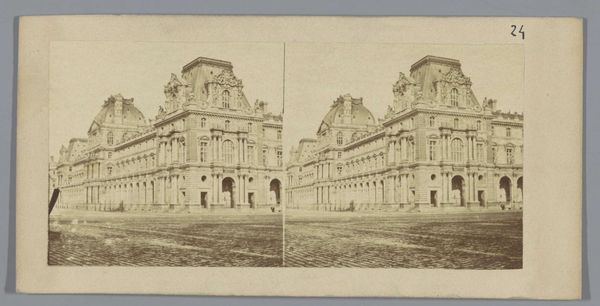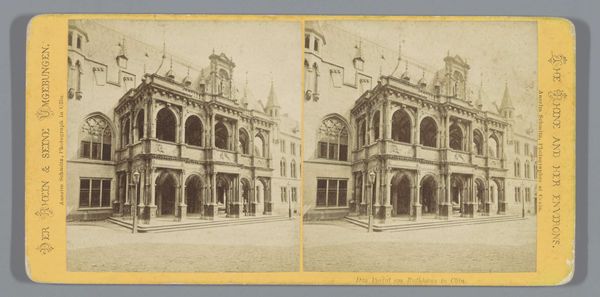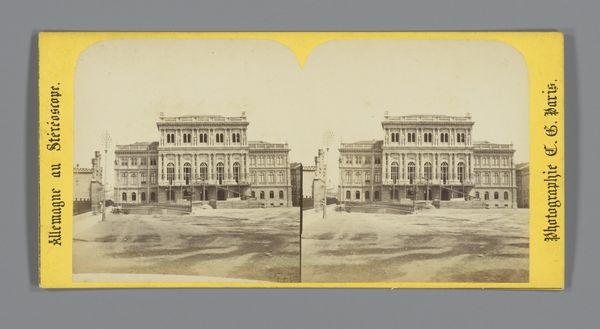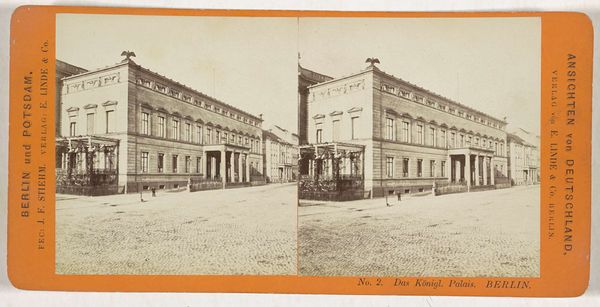
Gezicht op de poort van het Ospedale Maggiore in Milaan c. 1860 - 1880
0:00
0:00
print, photography
# print
#
photography
#
ancient-mediterranean
#
cityscape
#
italian-renaissance
Dimensions: height 84 mm, width 176 mm
Copyright: Rijks Museum: Open Domain
Curator: Welcome. Before us, we have a photographic print entitled "Gezicht op de poort van het Ospedale Maggiore in Milaan" by Giorgio Sommer, likely created sometime between 1860 and 1880. It resides here with us at the Rijksmuseum. Editor: The receding lines of that arcade... it feels monumental yet eerily deserted. The tonality is limited, but the light play still creates real architectural interest. It almost has an oppressive feeling given its implied scale. Curator: That's a compelling reaction. Sommer was clearly interested in documenting the grandeur of civic architecture. The Ospedale Maggiore, now the Università degli Studi di Milano, represents a powerful institution, reflective of Milan's socio-political structure at the time. These sorts of institutions, as they were designed for public aid, reinforced specific narratives that served hegemonic interests in a variety of ways. Editor: Absolutely. It projects power but also hints at potential social inequities. An Ospedale, no matter how grand, is still an institution born of some failure, of collective vulnerabilities made visible, of people with individual circumstances that made it difficult to sustain themselves without aid. I notice how the frame reinforces a kind of surveillance as a result; no matter how grand, there’s this sensation that these spaces exist in order to control what happens inside the frame and its relationship with the streets and society. Curator: Yes, the composition emphasizes the orderly structure. Photography like this served to visually reinforce the state's ability to provide order, but I take your point; order can be both a comfort and a tool for maintaining social control. It gives a concrete presence to state power at an emergent stage in the process of consolidating civil service and centralized modes of governing citizens. Editor: The clean streets, devoid of people in this image, also reinforce a carefully constructed ideal that elides other perspectives on the relationship between governing institutions and those being governed. Curator: Precisely. Sommer's perspective reflects a particular historical viewpoint on the role of public institutions, shaping how we perceive their legacy through this seemingly objective lens. Editor: I appreciate how considering the historical and socio-political contexts encourages us to deconstruct these powerful symbols and challenge simplistic understandings of their function. Curator: Agreed. Artworks such as these, while seemingly straightforward in their documentation, serve as potent reminders of how representation and power intertwine within urban spaces and society itself.
Comments
No comments
Be the first to comment and join the conversation on the ultimate creative platform.
